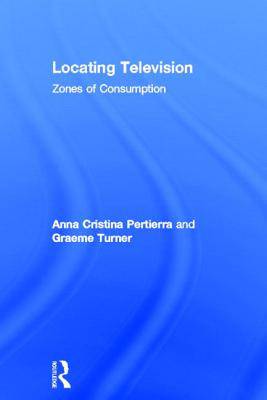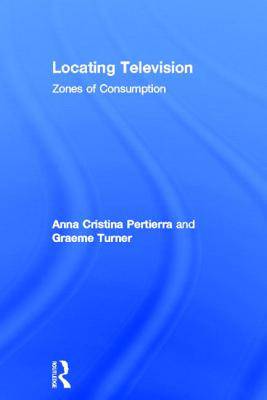
- Retrait gratuit dans votre magasin Club
- 7.000.000 titres dans notre catalogue
- Payer en toute sécurité
- Toujours un magasin près de chez vous
- Retrait gratuit dans votre magasin Club
- 7.000.0000 titres dans notre catalogue
- Payer en toute sécurité
- Toujours un magasin près de chez vous
Locating Television
Zones of Consumption
Anna Cristina Pertierra, Graeme TurnerDescription
Locating Television: Zones of Consumption takes an important next step for television studies: it acknowledges the growing diversity of the international experience of television today in order to address the question of 'what is television now?'
The book addresses this question in two interrelated ways:
- by situating the consumption of television within the full range of structures, patterns and practices of everyday life;
- and by retrieving the importance of location as fundamental to these structures, patterns and practices - and, consequently, to the experience of television.
This approach, involving collaboration between authors from cultural studies and cultural anthropology, offers new ways of studying the consumption of television - in particular, the use of the notion of 'zones of consumption' as a new means of locating television within the full range of its spatial, temporal, cultural, political and industrial contexts.
Although the study draws its examples from a wide range of locations (the US, the UK, Australia, Malaysia, Cuba, and the Chinese language markets in Asia - -Hong Kong, Singapore, China and Taiwan), its argument is strongly informed by the evidence and the insights which emerged from ethnographic research in Mexico. This research site serves a strategic purpose: by working on a location with a highly developed and commercially successful transnational television industry, but which is not among the locations usually considered by television studies written in English, the limitations to some of the assumptions underlying the orthodoxies in Anglo-American television studies are highlighted.
Suitable for both upper level students and researchers, this book is a valuable and original contribution to television, media and cultural studies, and anthropology, presenting approaches and evidence that are new to the field.
Spécifications
Parties prenantes
- Auteur(s) :
- Editeur:
Contenu
- Nombre de pages :
- 168
- Langue:
- Anglais
Caractéristiques
- EAN:
- 9780415509787
- Date de parution :
- 11-12-12
- Format:
- Livre relié
- Format numérique:
- Genaaid
- Dimensions :
- 156 mm x 233 mm
- Poids :
- 469 g

Les avis
Nous publions uniquement les avis qui respectent les conditions requises. Consultez nos conditions pour les avis.






